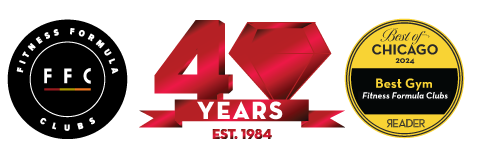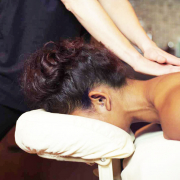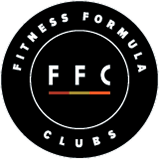What Is The Best Thing To Do For A Sore Body?
You know that feeling of guilt when you go to the dentist and he or she asks you how often you floss? I get that same feeling when I make an appointment for a massage and the massage therapist asks how often I stretch.
I know that my body needs recovery time, and I’ve suffered enough overuse injuries to know better than to overlook a proper cool down. But I just don’t like doing “recovery work.” It’s boring, it’s time consuming and I never feel like it’s helping me that much.
I try to get a massage once a quarter, and my body always feels so much better after my appointment. If I could afford to get a massage every week, I would, but I also need to do a better job in between appointments to take care of my body and give it the proper recovery it needs.
That led me to my question: what is the most effective form of recovery? There are all kinds of gadgets for and opinions on recovery these days, and as someone who hates stretching, I want to know exactly what I should make the time to do every day to take care of my body. I asked FFC Spa Manager and Massage Therapist Jason VonGerichten his thoughts on recovery and the best ways to care for a sore body. Here’s what he had to say:
Q: What is the most effective form of recovery? Is it getting a massage, using a massage tool, stretching?
A: Massage is the answer for several reasons. Massage therapists (especially the ones at FFC) have spent many hours studying human anatomy, specifically the musculoskeletal system, so they are very adept at finding the true source of somebody’s pain. If, with your tight muscles, you also have knots, or trigger points, it is very difficult to sustain constant pressure on that spot without somebody else’s assistance. If you’ve ever tried pressing into your own upper traps to get rid of neck pain, you’ll know what I mean.

Massage tools like Theragun and Hypervolt are all well and fine, but they are no replacement for an actual massage. And stretching is good, but if a muscle has a trigger point, it just won’t stretch to its full length, so stretching on its own will only take you so far.
Q: What should I be doing in between my massage appointments to make sure I’m caring for my body?
A: Stretching every day is important, but really just moving in a natural way is even better. So many kinks get worked out of the musculature by just taking a long walk, and walking can help stave off progressive illness later in life.
Related: Can Walking Really Help You Lose Weight?
If you’re someone who works at a computer all day, it may be beneficial to use a massage tool for the neck. I’m a big fan of the Theracane, which is a big fiberglass hook with handles on it and a knob on the end that you can really dig into your upper traps and other upper back and neck muscles.
And finally, get a good pillow! The best investment I ever made was in a quality pillow that supports my neck properly when I sleep. I noticed at the beginning of quarantine that no matter what I did, my neck felt super stiff, so I finally took the plunge and paid more than ten bucks for a good pillow. No neck pain since.
Q: Okay, I’m ready to book my massage. How do I know which massage is the best for me?
A: There are four main types of massage that you’ll usually see offered at a spa, and we offer each at FFC.
- Swedish is your basic, off-the-rack massage, and it’s a great modality if relaxation is what you’re looking for. It involves a lot of long, flushing strokes to promote a parasympathetic response (your rest and digest function).
- Deep Tissue, as we define it, is a more targeted approach to relieving your pain. The next question everyone always asks is: Does it hurt? The answer is: It shouldn’t. At least, not in an unbearable way. What we’re looking for in a Deep Tissue massage is a “good pain,” the type of pain where you know something is being fixed or relieved. This is our most popular modality.
- Sports Massage typically involves a lot of Deep Tissue techniques specific to whatever type of athlete you are (if you’re a runner, perhaps a lot of focus to your hamstrings and calves, etc), and then some stretching to those areas to reset the proper muscle length after the deeper work.
- Myofascial Massage is a massage done without any oil in order to affect the connective tissue that surrounds the muscles (think the white stuff on raw chicken). There is evidence to show if you want a tight muscle to release then you must first release the fascia surrounding the muscle. Myofascial techniques can be used in conjunction with other Deep Tissue techniques, or they can just be used on their own.
Related: Massage Therapy Benefits Based On The Type Of Fitness You Do
Q: What about using lacrosse balls or tennis balls as a form of “self-massage?”
A: This depends on the body. I personally respond really well to using a lacrosse ball in my glutes near my Sacroiliac (SI) joints, but some people find a lacrosse ball too invasive, so maybe a tennis ball for them. If a tennis ball still feels too intense, then maybe just a hot pack to loosen up the tissue.
And then the question becomes: Is the person’s pain resulting from an injury, overuse, tightness, bad posture, etc? If it’s from an injury, say I actually hurt my SI joint, then I wouldn’t even try massage until all the inflammation goes away (maybe one or two days). During that time, it’s important to rest, perform some gentle stretching, maybe ice the area if the pain is intense.
Q: If I’m a regular exerciser (say 4-5 sessions at the gym per week), how often should I be coming in for a massage?
A: If you’re not injured and you’re just feeling sore from constantly working out, then one massage per month should tune you up just fine. If you’re battling a certain condition (tennis elbow, shoulder tendinitis, shin splints, etc) then it may be best to come in twice a month or even once a week. The key is judging whether progress is being made.
If you’re getting a massage twice a week and the massage only relieves your pain for a few hours, then as much as we appreciate the business, maybe massage isn’t the right treatment option for you.
Q: Why is it so crucial to make time for recovery efforts?
A: Bodies need time to heal, plain and simple, and your body comes pre-programmed with many different wonderful healing options. We just need to let our bodies do what they do best. Getting a full night’s rest can do wonders for your physical wellness. Many doctors say the best thing you can do for your heart is to take a nap every day.
In regards to lifting weights, you’re essentially tearing your muscles so that they’ll heal and regrow larger. They will not heal or grow if you challenge and tear the same muscles every day (especially the older you get). Can massage aid with this recovery? Yes! Massage can help the body heal itself and help in resetting overworked muscles to their proper resting length.
Ready to book your next massage? Head to ffc.com/spa to view our offerings and make an appointment with one of our massage therapists today.

Post written by FFC Contributor Natalie Casper.








